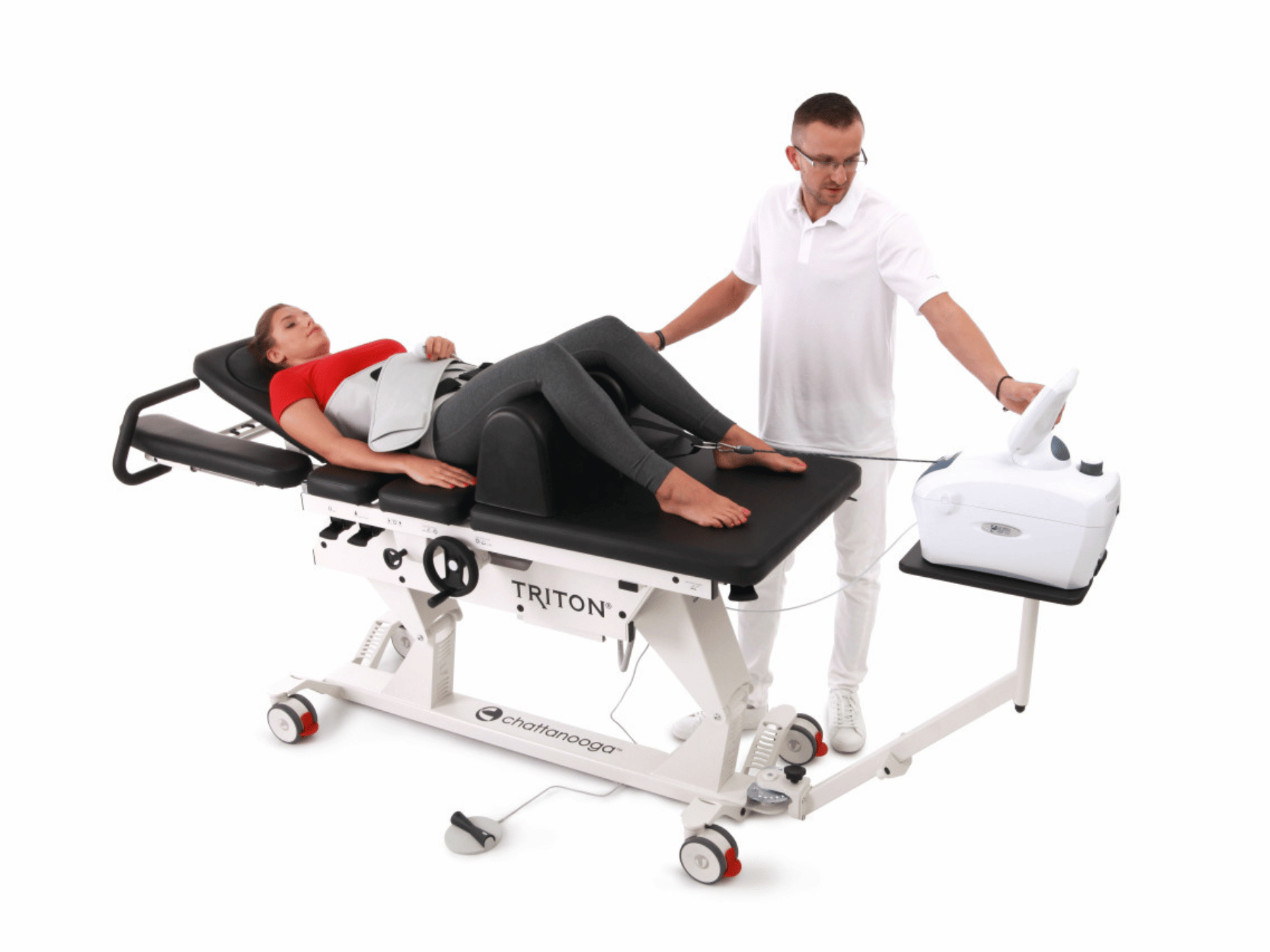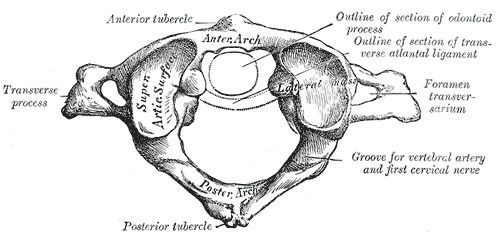Ice Pick Headache (Opthalmodynia Periodica)
Ever experienced a sudden sharp pain in your head that goes away quickly? You may have a primary stabbing headache.
Primary stabbing headache, also referred to as ophthalmodynia periodica or “ice-pick headache,” is characterized by sudden, severe stabbing pains that typically manifest around one or both eyes. These headaches can present as a singular sharp jab or a series of stabbing sensations.
The duration of each pain episode is usually brief (typically just a few seconds), although in rare cases, the discomfort may persist for up to 2 minutes. These headaches occur unpredictably, with frequencies varying from infrequent to daily episodes.
I’ve seen patients confuse ice pick headaches with migraines, so it’s important to learn the differences. Although 40% of patients who experience primary stabbing headache also suffer from migraines , they are not the same condition.
Fortunately, ice pick headache is typically not something to worry about, nor is it caused by a serious underlying condition. Most people experience them for up to a day or two and don’t get them again.
Let’s get into the symptoms, causes, preventative measures, and treatments for primary stabbing headache. I’ll also break down the differences between primary stabbing headaches and other common headaches and headache conditions.
Do you think you may be suffering from primary stabbing headaches ? Dr. Ty Carzoli helps patients treat a full range of disruptive headaches with precise orthospinology techniques. Schedule your appointment today by filling out our contact form or calling 303-955-8270.
Symptoms
Primary stabbing headaches feel like one or more short, sharp jabs to your head with an ice pick. The sharp pain occurs around the eyes. Its nickname “ice pick headache” is appropriate, though gruesome, as it quite literally feels like an ice pick going in and out of the eye.
Common symptoms of primary stabbing headache (ice pick headache) include:
- Sudden onset of head pain with no warning
- Severe stabbing pain in the head or around the eyes
- Sharp head pain on top , front, or sides of the head
- Duration between 3 and 120 seconds (80% of episodes last no more than 3 seconds)
- Nausea
- Dizziness
- Rarely: Temporary vision loss in one eye (monocular vision loss)
- Rarely: Broken blood vessel in the eye (conjunctival hemorrhage)
Diagnosis
According to the International Headache Society (IHS), the diagnostic criteria for primary stabbing headache are:
- Head pain occurring spontaneously as a single stab or series of stabs and
fits the following three criteria:
- Each stab lasts for up to a few seconds
- Stabs recur with irregular frequency, from one to many per day
- No cranial autonomic symptoms (which would indicate a different headache: SUNA )
- Not better accounted for by another ICHD-3 diagnosis (meaning no other disease has been identified that would cause these symptoms)
Doctors may use imaging to diagnose potential secondary causes of primary stabbing headaches, in which the ice pick-like pain could be a symptom.
Note: It is rare for a doctor to actually diagnose primary stabbing headache, as they seldom recur more than a day or two after onset. A diagnosis is most often warranted when stabbing pains recur for multiple days.
If you have pain like this that recurs for more than a day or two, seek medical advice. Your provider may prescribe pharmaceutical drugs to relieve the pain. The primary drug therapy for ice pick headaches is indomethacin.
Causes & Risk Factors
Ice pick headache causes are not well understood. However, some neurology experts believe that as a primary headache disorder, primary stabbing headache is caused by short-term disruptions in your brain’s pain-controlling mechanisms.
Primary stabbing headache may be caused and/or triggered by:
- Short-term disruptions in the brain’s pain-control mechanisms
- Migraine
- Trigeminal neuralgia
- Bell’s palsy
- Shingles ( herpes zoster )
- Multiple sclerosis
- Lack of sleep
- Bright lights
- Posture changes
- Emotional stress
- Changes in weather
- Eating ice cream or drinking a cold drink
- Pituitary tumor (in which case, the pain is considered a “secondary” headache)
Women are more likely to get primary stabbing headaches than men. The average age of a patient diagnosed with this condition is 28. In general, children and teens get these headaches at the same frequency as adults, no matter their age.
Can dehydration cause ice pick headaches ? Dehydration headache is a different health condition from a primary stabbing headache. Dehydration headaches are caused by not drinking enough water. They usually last longer, but don’t hurt as much as ice pick headaches.
Prevention and Treatment
Based on the causes of stabbing headache pain, here are 4 ways to naturally address or prevent an ice pick headache:
- Avoid bright lights and go to a dark room.
- Get high-quality sleep at regular intervals.
- Eat cold foods slowly, or not at all.
- Avoid or relieve stress whenever possible.
Primary stabbing headaches do not usually require treatment and almost always go away after just a few days. However, you should seek treatment for your headache pain if it happens several times or doesn’t go away within 3 days.
It is extremely rare that primary stabbing headache pain would last longer than a couple of days. If that were to occur, the most common 3 treatments (along with their uses and side effects) include indomethacin, gabapentin, and melatonin.
1. Indomethacin
Indomethacin is a non-steroidal anti-inflammatory drug (NSAID) that treats primary stabbing headache about 65% of the time — the best of any studied drug. Indomethacin helps ice pick headache pain go away.
Possible side effects of indomethacin include:
- Nausea and vomiting
- Dizziness
- Heartburn
- Kidney problems
- Abdominal pain
- Diarrhea
- Constipation
- Headache
2. Gabapentin
Gabapentin is another common drug used to treat primary stabbing headache. Gabapentin, a nerve pain drug, is often prescribed as a second option after indomethacin does not solve the underlying issue.
Possible side effects of gabapentin include:
- Drowsiness
- Dizziness
- Fatigue
- Vision problems
- Tremors
3. Melatonin
Melatonin may be a more suitable treatment option for children with this type of headache due to the limited side effects more appropriate for pediatric patients. Melatonin may help reduce the frequency of migraines, too (often associated with primary stabbing headache pain).
Potential side effects of melatonin include:
- Drowsiness
- Nausea
- Headache
Is It Primary Stabbing Headache or Something Else?
While many headaches can produce similar pain, each type of headache features a unique sensation and source. Let’s compare some of the most common headache disorders with overlapping symptoms to primary stabbing headache.
Migraine vs. Primary Stabbing Headache
Migraine headaches typically last several hours and cause many symptoms not associated with primary stabbing headache.
| Migraine | Primary Stabbing Headache | |
| Duration | 4-72 hours | 3-120 seconds |
| Frequency | As infrequently as once or twice every year to as often as daily | As infrequently as a single episode to as often as several times throughout one day |
| Symptoms | Severe, intense headache pain (in most cases), tingling, nausea, sensitivity to light and sound, visual/neurological symptoms (aura), blurred vision, mood changes, confusion, and/or fatigue | Severe, stabbing head pain around the eyes, nausea, dizziness, and (rarely) broken blood vessels in the eye and/or temporary vision loss |
| Onset | Preceded by “ prodrome ,” a period of hours to days of pre-migraine symptoms | Sudden and without warning |
Cluster Headache vs. Primary Stabbing Headache
Cluster headaches and primary stabbing headaches both occur with sudden onset. However, cluster headaches are also associated with specific symptoms of the eye.
| Cluster Headache | Primary Stabbing Headache | |
| Duration | 1-3 hours | 3-120 seconds |
| Frequency | Every other day to multiple times a day | As infrequently as a single episode to as often as several times throughout one day |
| Symptoms | Severe, intense head pain on one side of the head in a single “cluster,” often behind or around the eyes, significant tears, red eyes, drooping eyelid, eye swelling, running/stuffy nose | Severe, stabbing head pain around the eyes, nausea, dizziness, and (rarely) broken blood vessels in the eye and/or temporary vision loss |
| Onset | Sudden and without warning | Sudden and without warning |
SUNCT vs. Primary Stabbing Headache
Priamry stabbing headaches and SUNCT (Short-lasting Unilateral Neuralgiform headache attacks with Conjunctival injection and Tearing) share the characteristics of short-lasting, intense pain but differ in several features.
SUNCT is believed to be a type of trigeminal neuralgia (a facial pain disorder) and does not respond to treatments that may be effective for other headache disorders.
| SUNCT | Primary Stabbing Headache | |
| Duration | 5 seconds to 4 minutes | 3-120 seconds |
| Frequency | 5-6 times per hour, usually do not go away after one occurrence | As infrequently as a single episode to as often as several times throughout one day |
| Symptoms | Severe, intense stabbing, throbbing, and/or burning head pain on one side of the head behind or around the eyes, red/watery eyes, nasal congestion, swollen eyelids, sweating, and increased systolic blood pressure | Severe, stabbing head pain around the eyes, nausea, dizziness, and (rarely) broken blood vessels in the eye and/or temporary vision loss |
| Onset | Sudden and without warning | Sudden and without warning |
Thunderclap Headache vs. Primary Stabbing Headache
Thunderclap headaches are sudden and severe, like primary stabbing headaches. Unlike ice pick headache, though, thunderclap headache typically causes more intense pain and may or may not be the result of a severe underlying condition.
| Thunderclap Headaches | Primary Stabbing Headache | |
| Duration | Intense pain for at least 5 minutes up to several hours; less severe headache may last up to 7 days | 3-120 seconds |
| Frequency | May occur repeatedly over 1-2 weeks; recurs in subsequent months to years in ⅓ of patients | As infrequently as a single episode to as often as several times throughout one day |
| Symptoms | Severe head pain, numbness/tingling, muscle weakness, speech problems, nausea/vomiting, seizures, vision changes, and confusion | Severe, stabbing head pain around the eyes, nausea, dizziness, and (rarely) broken blood vessels in the eye and/or temporary vision loss |
| Onset | Sudden and without warning, reaches a peak around 30 seconds after onset; may be triggered by serious medical conditions | Sudden and without warning |
Tension Headache vs. Primary Stabbing Headache
Tension headaches are the most common type of headache. Unlike ice pick headaches, tension headaches lead to moderate pain around your entire head, instead of short severe pain in smaller areas of your head.
| Tension Headaches | Primary Stabbing Headache | |
| Duration | 30 minutes to 1 week | 3-120 seconds |
| Frequency | Fewer than 15 days a month for at least 3 months; however, may become chronic | As infrequently as a single episode to as often as several times throughout one day |
| Symptoms | Mild-to-moderate dull pain spread out as a band or vice around the head, neck soreness/pain (in some cases), difficulty sleeping, and (rarely) sensitivity to light and/or sound | Severe, stabbing head pain around the eyes, nausea, dizziness, and (rarely) broken blood vessels in the eye and/or temporary vision loss |
| Onset | Slow over the course of a few hours, often triggered by stressful situations or mental health concerns | Sudden and without warning |
FAQs
Primary stabbing headaches are usually short-lived and may occur spontaneously without an underlying medical condition.
The diagnostic criteria states that primary stabbing headache can only be diagnosed if no disease is present in the underlying cranial nerve structure. In other words, these headaches aren’t diagnosed if there’s evidence of another condition, such as a tumor.
In very rare cases, the sharp pain associated with these headaches could actually be a brain bleed, also called an aneurysm. Remember, this is extremely uncommon.
Ice pick headaches feel anything but normal — it’s never normal to feel pain best described by the sensation of being stabbed in the head. Between 2% and 35% of the population experiences ice pick headaches at some point in their lifetime.
Primary stabbing headaches usually last less than one minute — sometimes, only for a split second. However, the short-lived pain can be excruciating. Attacks can occur multiple times in a day, while you are awake or sleeping.
Opthalmodynia periodica was first identified in 1964 by Dr. Richard Lansche. In 2013, it was officially renamed primary stabbing headache .
In 2016, the diagnostic criteria for ice pick headaches were revised by the 3rd beta edition of the International Classification of Headache Disorders (ICHD-3). The ICHD-3 posits that ice pick headaches involve all head areas , not just the ophthalmic branch region of the trigeminal nerve.
Primary stabbing headache may also be known as:
- Ice pick headache
- Opthalmodynia periodica
- Needle-in-the-eye syndrome
- Idiopathic stabbing headache
- Short-lived head pain syndrome
- Jabs and jolts syndrome
Scientific journals typically refer to this condition as primary stabbing headache or opthalmodynia periodica (the latter for research released before 2013). “Ice pick headache” is commonly used by consumer websites and may be the term your healthcare provider uses to describe your symptoms.
Primary stabbing headaches can occur both as a secondary (triggered by a separate underlying condition like shingles or meningioma) or primary (its own isolated condition) headache disorder.
Sharp pain in your head is most often caused by dysfunction in the cranial nerves. Abnormal cerebrospinal fluid levels may also cause sharp headache pain.
Long-Term Outlook
Primary stabbing headaches are a somewhat common phenomenon, especially in those who also experience migraines. The prevalence of these headaches may impact 2%-35% of the population. They can be scary, but now you know what to expect and what to do about it.
Call a healthcare professional right away if your headaches are affecting your daily life or if your ice pick headaches have recurred over more than a couple of days.
If you are suffering from frequent headaches, consider upper cervical chiropractic care. At Denver Upper Cervical Chiropractic, we use science-based techniques to gently manipulate the spine. Most headache pain can be relieved with spinal and neck adjustments .
Make an appointment with us today!
- Korabelnikova, E. A., Danilov, A. B., Danilov, A. B., Vorobyeva, Y. D., Latysheva, N. V., & Artemenko, A. R. (2020). Sleep disorders and headache: A review of correlation and mutual influence. Pain and therapy , 9 (2), 411-425. Full text: https://www.ncbi.nlm.nih.gov/pmc/articles/PMC7648824/
- Elizagaray-Garcia, I., Beltran-Alacreu, H., Angulo-Díaz, S., Garrigos-Pedron, M., & Gil-Martinez, A. (2020). Chronic primary headache subjects have greater forward head posture than asymptomatic and episodic primary headache sufferers: Systematic review and meta-analysis. Pain medicine , 21 (10), 2465-2480. Full text: https://www.researchgate.net/profile/Ignacio-Elizagaray-Garcia-2/publication/345144818_Chronic_Primary_Headache_Subjects_Have_Greater_Forward_Head_Posture_than_Asymptomatic_and_Episodic_Primary_Headache_Sufferers_Systematic_Review_and_Meta-analysis/links/61c44cd7c99c4b37eb1878af/Chronic-Primary-Headache-Subjects-Have-Greater-Forward-Head-Posture-than-Asymptomatic-and-Episodic-Primary-Headache-Sufferers-Systematic-Review-and-Meta-analysis.pdf
- Fischer, M. A., & Jan, A. (2019). Medication-overuse headache. Full text: https://www.ncbi.nlm.nih.gov/books/NBK538150/
- Jovel, C. E., & Mejía, F. S. (2017). Caffeine and headache: specific remarks. Neurología (English Edition) , 32 (6), 394-398. Full text: https://www.sciencedirect.com/science/article/pii/S2173580817300858
- Leung, A. (2020). Addressing chronic persistent headaches after MTBI as a neuropathic pain state. The Journal of Headache and Pain , 21 (1), 77. Full text: https://www.ncbi.nlm.nih.gov/pmc/articles/PMC7304149/
- Kaur, A., & Singh, A. (2013). Clinical study of headache in relation to sinusitis and its management. Journal of Medicine and Life , 6 (4), 389. Full text: https://www.ncbi.nlm.nih.gov/pmc/articles/PMC3973877/
- Kikkeri, N. S., & Nagalli, S. (2022). Migraine with aura. In StatPearls [Internet]. StatPearls Publishing. Full text: https://www.ncbi.nlm.nih.gov/books/NBK554611/
- Ruschel, M. A. P., & De Jesus, O. (2023). Migraine headache. In StatPearls [Internet]. StatPearls Publishing. Full text: https://www.ncbi.nlm.nih.gov/books/NBK560787/
- Al Khalili, Y., & Chopra, P. (2020). Hypnic Headache. Full text: https://www.ncbi.nlm.nih.gov/books/NBK557598/
- Arca, K. N., & Halker Singh, R. B. (2019). The hypertensive headache: a review. Current pain and headache reports , 23 , 1-8. Full text: https://www.iranheadache.ir/wp-content/uploads/2020/04/The-Hypertensive-Headache-a-Review.pdf
- Jersey, A. M., & Foster, D. M. (2018). Cerebral aneurysm. Full text: https://www.ncbi.nlm.nih.gov/books/NBK507902/
- Vernon, H., Borody, C., Harris, G., Muir, B., Goldin, J., & Dinulos, M. (2015). A randomized pragmatic clinical trial of chiropractic care for headaches with and without a self-acupressure pillow. Journal of manipulative and physiological therapeutics , 38 (9), 637-643. Abstract: https://pubmed.ncbi.nlm.nih.gov/26548737/
- Al Khalili, Y., Ly, N., & Murphy, P. B. (2018). Cervicogenic headache. Full text: https://www.ncbi.nlm.nih.gov/books/NBK507862/
- Urits, I., Patel, M., Putz, M. E., Monteferrante, N. R., Nguyen, D., An, D., … & Viswanath, O. (2020). Acupuncture and its role in the treatment of migraine headaches. Neurology and therapy , 9 , 375-394. Full text: https://www.ncbi.nlm.nih.gov/pmc/articles/PMC7606388/
- Jimenez, M. P., DeVille, N. V., Elliott, E. G., Schiff, J. E., Wilt, G. E., Hart, J. E., & James, P. (2021). Associations between nature exposure and health: a review of the evidence. International Journal of Environmental Research and Public Health , 18 (9), 4790. Full text: https://www.ncbi.nlm.nih.gov/pmc/articles/PMC8125471/
The post Ice Pick Headache (Opthalmodynia Periodica) appeared first on Denver Upper Cervical Chiropractic.
Visit us at Denver Upper Cervical Chiropractic
We serve patients in Denver, CO.
HOURS
Monday 1:00 pm – 6:00 pm
Tuesday 9:00 am – 6:00 pm
Wednesday 1:00 pm – 6:00 pm
Thursday 9:00 am – 6:00 pm
Friday Reserved for Traveling Patients
1778 S Broadway, Denver, CO 80210, United States of America
Phone:
(303)-955-8270



